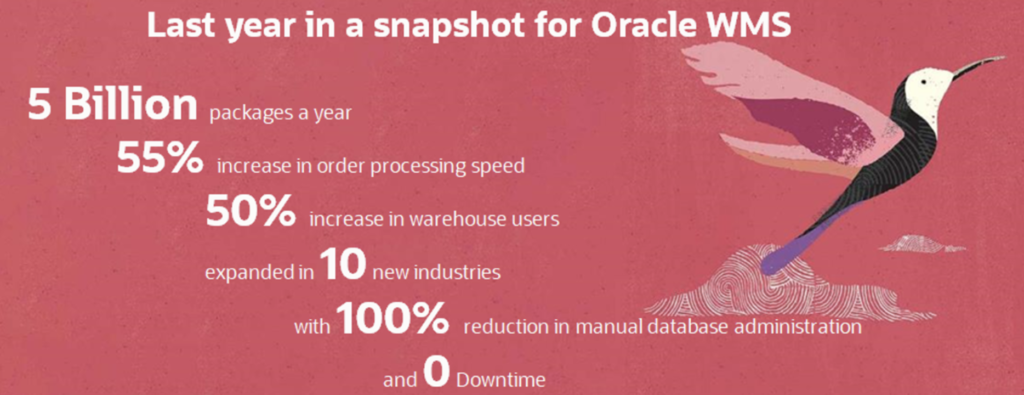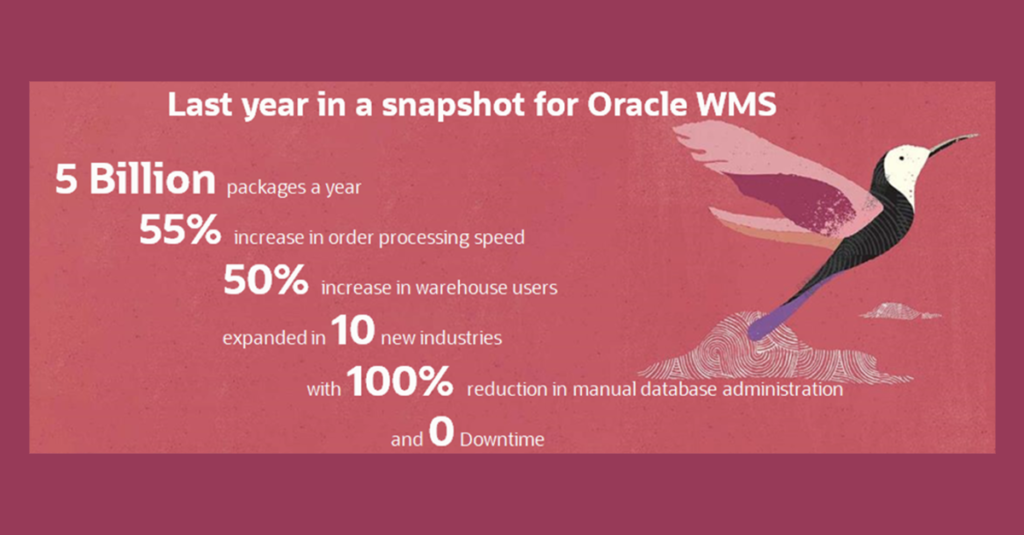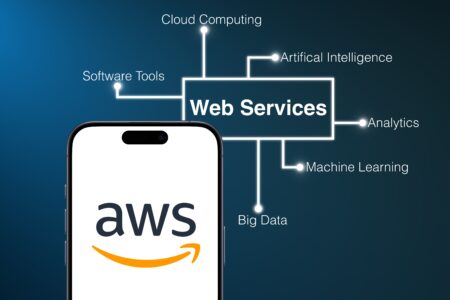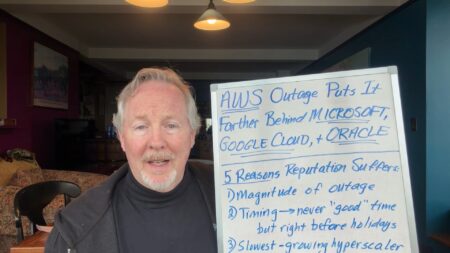A hypergrowth warehouse-management app owned by Oracle has moved 700 PostgreSQL databases from AWS and Rackspace servers and replaced them all with Oracle Autonomous Transaction Processing running on Oracle Cloud Infrastructure.
The move from AWS and Rackspace to Oracle has enabled the warehouse-management business to perform at levels never before possible, allowed it to leverage full elasticity for performance and cost optimization, enhanced security, and lowered TCO. I’ll offer some specifics on those improvements in just a moment.
When Oracle acquired LogFire in 2016, its cloud-native warehouse-management application was running on AWS and Rackspace servers using PostgreSQL databases. But as demand for superb supply-chain performance began to climb, that combination was unable to meet the escalating needs of LogFire and a search for better alternatives was launched.
In the middle of 2019, LogFire—now called Oracle Warehouse Management Cloud (WMS)—selected the Autonomous Transaction Processing (ATP) version of Oracle Autonomous Database as its foundation for future growth and innovation. (The other enterprise version of Oracle Autonomous Database is Autonomous Data Warehouse.)
Here’s a quick glimpse at LogFire’s massive growth since it switched from AWS and Rackspace to Oracle over the past year—and it’s particularly impressive that LogFire’s hypergrowth occurred during 2020, when supply chains were under relentless pressure and scrutiny as the global economy underwent a massive transformation.

From the case study, here are a few powerful angles that I found to be most compelling about the shift to Oracle from AWS and Rackspace.
Limitations of the AWS environment
- LogFire couldn’t add new features at the pace customers were demanding;
- The need for manual management rose dramatically as LogFire attempted to keep up with customer demands for availability; and
- The AWS and Rackspace infrastructure and PostgreSQL databases couldn’t scale rapidly enough to meet seasonal spikes in demand.
Rapid migration to Autonomous Transaction Processing and OCI
- LogFire said that due to the architectural openness and flexibility of ATP and OCI, the migration from AWS and Rackspace to Oracle for all 700 databases could have been completed in just 3 months. However, LogFire decided to extend the full cutover project to 7 months so as not to cause any disruption during peak demand time for any of its customers, which in total shipped 5 billion packages last year.
On Oracle, performance soared even as workload spiked
- Once on Oracle ATP and OCI, LogFire was able to accelerate order-processing speed by 55% even as the volume of packages being shipped jumped 45%;
- With those new levels of performance, LogFire was able to expand from 5 industries to 15 industries; and
- The company was able to double the volume of customers it served at those dramatically improved order-processing speeds.
Developers could focus on customer-facing enhancements, not maintenance
- LogFire was able to release all 10 of the full-time contractors responsible for maintaining the old database cloud environment and redeploy those funds toward development efforts that let it expand into new industries and serve new customers; and
- The new features and capabilities those developers were able to create allowed LogFire to boost by 50% the number of warehouse workers who could engage with the system to deliver better performance and better experiences for customers.
No downtime—scheduled or otherwise
- With AWS and and Rackspace running PostgreSQL, LogFire was required to schedule planned downtime for incremental patching, maintenance, and scaling. With Oracle Autonomous Transaction Processing, these operations occur automatically online—so scheduled downtime is a remnant of the past.
- As Arun Murugan, VP WMS product development, said, “…there were performance and reliability concerns that made it unfit for our production databases. These concerns included no performance guarantees, manual tuning of a large number of database parameters to maintain performance levels, no automated bi-directional replication of the database, security gaps, downtimes for patching and maintenance, and more.”
Always-on Encryption
- With AWS RDS for PostgreSQL, encryption was available only for data in transmission. With Oracle ATP, encryption is always on: when data’s in transmission and also when it’s at rest.
As the digital economy takes hold across industries and across the globe, supply chains are indispensable parts of the delivery systems essential to the daily lives of billions of people—especially during the COVID-19 pandemic.
And now that LogFire has become Oracle Warehouse Management Cloud and is running on Oracle Autonomous Transaction Processing and Oracle Cloud Infrastructure, customers in the supply-chain and logistics industries are finding that there’s a better way to meet those world-shaping challenges.
This article brought to you by Oracle.








